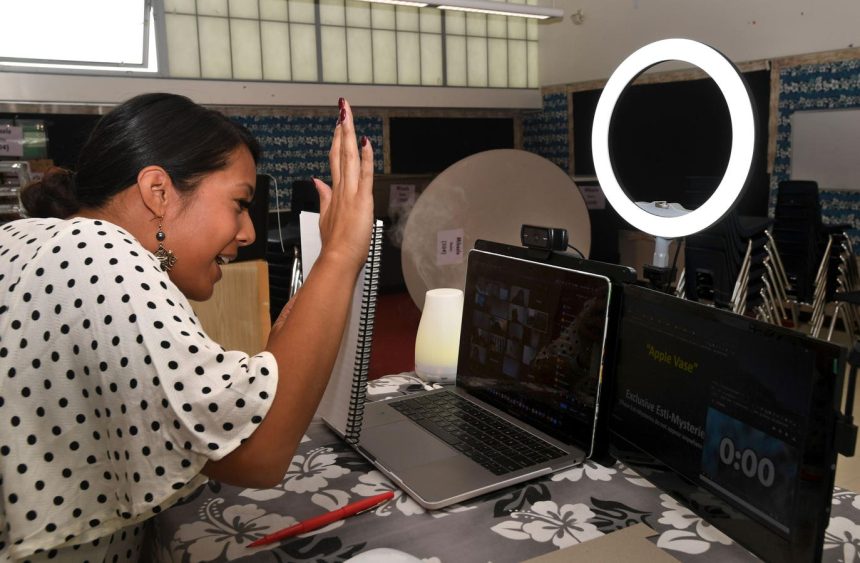“Fueled by teacher shortages,” we’re told in a recent article in The74, “Zoom-in-a-Room” is making a comeback.
If this is the case, although it’s better than the alternative—no teacher at all—it’s also a missed opportunity for deeper innovation.
As reporter Linda Jacobson noted in the article, online learning has long been used in schools for subjects they couldn’t otherwise offer. She cited A.P. Calculus and Latin as examples. But even courses we think of as fundamental—physics, for example—have long been glaring areas where schools haven’t had qualified teachers. As I wrote nearly a decade ago, “less than two-thirds of high schools–63%–offer physics. Only about half of high schools offer calculus. Among high schools that serve large percentages of African-American and Latino students, one in four don’t offer Algebra II, and one in three don’t offer chemistry.”
According to Jacobsen, “as districts struggle to fill teaching vacancies, they are increasingly turning to companies like Proximity to teach core subjects.” The practice is one in which the teacher of record delivers whole-class learning virtually, and an in-person monitor—often a substitute teacher—tracks behavior and ensures students do their work.
In some ways, this use of online learning could be a classic case of a disruptive innovation, which begins as a primitive innovation. As a result, disruptive innovations typically start by serving areas of nonconsumption—where the alternative is nothing at all. By outperforming this alternative, disruptive innovations can take root and improve over time until they take over.
Back in 2008 when we published Disrupting Class, we suggested that teacher shortages could represent a significant area of nonconsumption into which online learning could make its mark and begin to transform classrooms from monolithic, one-size-fits-none environments to student-centered ones that customized for the individual needs of each and every learner.
But for this to occur, the use of online learning shouldn’t just be to pipe in a virtual teacher that delivers more one-size-fits-none, whole-group instruction. It would seem that there’s not a lot of room for improvement in that model.
Instead, schools ought to be taking these opportunities to do what Heather Staker and I described in Blended—offering a la carte online courses with great digital curriculum mixed with elements of the Flex or Individual Rotation models of blended learning that match the path and pace of each individual’s students’ learning needs.
Just as Teach to One uses a mix of in-person and online teachers to deliver a personalized-learning pathway for every student in middle-school math, so, too, could schools begin to assemble blended-learning options that leverage virtual teachers but do so in formats that move beyond standardized instruction and incorporate a variety of engaging learning modalities—from direct instruction tailored to a novice learner’s level to rich, real-world projects that allow a student to apply their learning of knowledge and skills in real performances, and from heads-down, solo learning experiences with software, offline work, or virtual tutors to small-group conversations and explorations.
These sorts of models would take advantage of the online format by delivering a tailored learning experience for each student rather than beaming a remote teacher into classes to do the same old, same old that hasn’t been working—and, as we saw with “Zoom-in-a-room” during COVID, was likely even less effective.
As Mallory Dwinal wrote in 2015 when she explored the opportunity for innovating where there are teacher shortages, states could also help by allowing these experiences to move away from seat-time requirements to mastery- or competency-based learning and giving districts some resources to evaluate and select the appropriate learning models.
So here’s my challenge to districts: Next time you see a teacher shortage, don’t just sub in a virtual teacher and fill the seat. Instead, get creative with a clear and SMART goal of boosting every child’s learning. Spend a bit of time thinking about how this could be an opportunity, not a threat. And use virtual talent to design a much more robust learning experience for all. That would be something worth talking about.
Read the full article here










